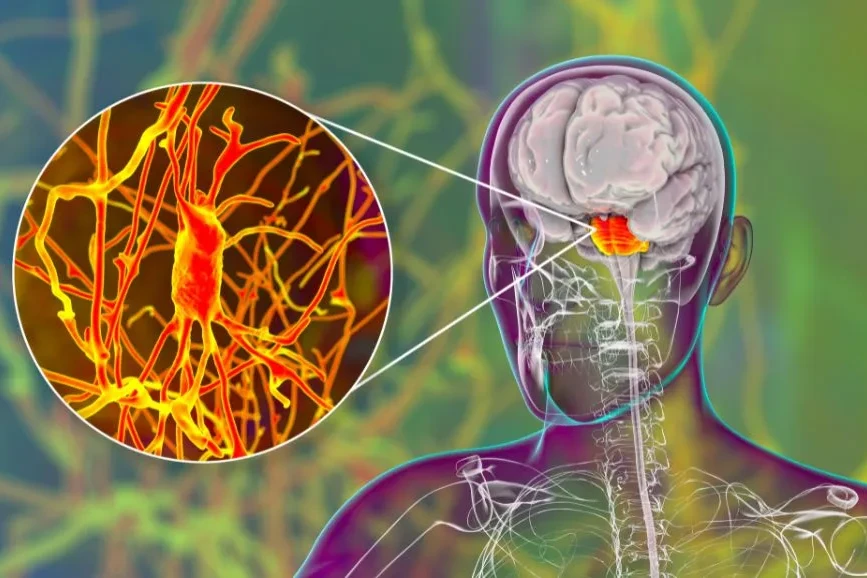Friedreich’s ataxia is a rare, inherited condition that quietly alters how the body works. It begins by disrupting movement, but slowly spreads to the heart, spine, and even senses.
Many families discover Friedreich’s ataxia during childhood when balance issues first appear, but some cases show up later in life. Today, newer Friedreich’s ataxia treatment options, better tests, and stronger care systems help people live fuller lives despite the odds.
In this blog, we break down what this disease really is, how it affects the body, and what care paths can actually help.
Table of Contents
ToggleGetting to Know Friedreich’s Ataxia
Friedreich’s ataxia is a progressive neurological condition. That means it gets worse as time goes by. It impacts the cerebellum, the area of the brain that regulates movement and balance, as well as the spinal cord and nerves.
Most individuals notice symptoms of Friedreich’s ataxia between the ages of 5 and 15. But Friedreich’s ataxia doesn’t just stop at movement. It can damage the heart and even impact speech, vision, and hearing.
What makes Friedreich’s disease different is that it’s inherited through genes. It follows an autosomal recessive inheritance pattern, meaning a person must inherit two defective gene copies, one from each parent.
Because Friedreich’s ataxia affects several systems at once, care needs to be broad. It’s named after a doctor called Nikolaus Friedreich, who first described the disease in the 1860s.
Early Signs and Common Symptoms to Watch For
Between the ages of 5 and 15, Friedreich’s ataxia typically manifests for the first time. But the symptoms don’t look the same for everyone.
 Here’s what to look out for:
Here’s what to look out for:
- Trouble walking or frequent tripping
- Loss of balance or clumsy movements
- Muscle weakness, especially in the legs
- Fatigue that doesn’t go away with rest
- Loss of feeling in feet or hands
- Slurred speech
- Vision or hearing loss
- Curving of the spine (scoliosis)
- Foot deformities like high arches or inward turning
- Difficulty swallowing or speaking clearly
These signs point to damage in the nerves, spinal cord, and part of the brain called the cerebellum.
In many cases, Friedreich’s ataxia symptoms also include heart problems and sometimes diabetes. That’s why spotting the signs early is so important.
Symptoms typically worsen over time, which is why the Friedreich’s ataxia life expectancy can be shorter than average.
When is It Time to Consult a Neurologist?
Early signs of Friedreich’s ataxia can look like regular clumsiness or growth-related issues.
Kids might trip more often, tire quickly, or lose balance during normal activities. But when these signs don’t improve, or seem to get worse, it’s time to act. A neurologist is the best person to evaluate ongoing symptoms.
What Triggers Friedreich’s Ataxia and Why It Happens?
Friedreich’s ataxia is caused by a mutation in the FXN gene, which normally helps the body produce a protein called frataxin. Frataxin is essential for the proper functioning of your cells’ power stations, known as mitochondria.
When there’s not enough frataxin, cells in the brain, spinal cord, and heart start to break down.
Friedreich’s ataxia inheritance pattern is followed by this condition. To develop this condition, you need to inherit the faulty gene from both parents. If you only get one copy, you won’t have the disease but you can still pass the gene to your kids.
Experts call this the genetic causes of Friedreich’s ataxia, and it’s why family history plays such a big role in diagnosis.
How Long Does the Condition Typically Progress?
Every person with Friedreich’s ataxia has a different journey.
Most people need a wheelchair within 10 to 20 years of their first symptoms. That means if a child is diagnosed at 10, they might rely on a wheelchair by 20 or 30.
Some people experience slow progress, especially if symptoms start later in life.
But in most cases, Friedreich’s ataxia continues to affect more body parts over time, including speech, breathing, and the heart. That’s why tracking the progression of Friedreich’s ataxia is so important.
Tests and Exams Used to Confirm a Diagnosis
Doctors use solid tools to confirm Friedreich’s ataxia.
Here are the most common tests:
- A detailed physical and neurological exam
- Reflex tests and balance checks
- Genetic tests to find the FXN gene mutation
- MRI or CT scans are used to examine the brain and spinal cord.
- Blood tests to check glucose and vitamin levels
- Nerve conduction studies and electromyograms (EMG)
- Heart tests like EKGs and echocardiograms
Doctors also use a system called the Friedreich’s ataxia rating scale to understand how serious the condition is. This tool helps guide decisions around care and therapy.
What Treatment Options Are Available Today?
Friedreich’s ataxia still has no known cure, however therapy is no longer passive.
Omaveloxolone (SkyclarysTM), the first medication created to treat Friedreich’s ataxia, received FDA approval in 2023.
While there is still no cure for Friedreich’s ataxia, treatment is no longer passive. It helps improve neurological function in people 16 years and older.
Treatment options for Friedreich’s ataxia also include physical therapy, occupational therapy, and speech therapy. These therapies help people maintain independence for longer. For heart issues, doctors may prescribe medications or in rare cases, consider surgery.
Mobility aids like braces, walkers, or wheelchairs can help keep patients active. Emotional support is equally important. Depression and anxiety are common but manageable with counseling or medication.
Living with FA: Day-to-Day Challenges and Support
Living with Friedreich’s Ataxia isn’t easy. But with the right help, it’s possible to live a meaningful life.
Kids may need special help at school. Adults may need mobility aids or modifications to their homes.
As the disease progresses, daily tasks like dressing, eating, or speaking may become harder.
People may also face emotional challenges like anxiety or depression. That’s why emotional support, therapy, and community groups matter just as much as physical treatment.
Family support and counseling are important too. When you’re caring for someone with FA, you’re part of their medical team.
Summary: What You Should Remember About FA
Friedreich’s ataxia is rare but serious. It starts early and gets worse over time. But spotting it early, getting the right tests, and starting Friedreich’s ataxia treatment can really help.
It’s caused by a change in a single gene. You need two faulty copies, one from each parent to develop the disease. That’s why how is Friedreich’s ataxia inherited matters so much.
The condition affects the nervous system and heart. Some people will need a wheelchair. Others may live with mild symptoms for years. Either way, ongoing care and emotional support can make a big difference.
FAQs About Friedreich’s Ataxia
Which systems of the body are most affected?
The nervous system and the heart are the two major systems affected by Friedreich’s ataxia, leading to mobility loss and cardiac complications.
Can Friedreich’s Ataxia be reversed or slowed down?
There is no cure, but Friedreich’s ataxia treatment like omaveloxolone can slow symptom progression and help manage daily function.
What’s the first noticeable symptom in most patients?
Most people notice difficulty walking or frequent loss of balance as the first Friedreich’s ataxia symptom.
Is Friedreich’s Ataxia passed down through families?
Yes, Friedreich’s disease is inherited from both parents who each carry one faulty gene following Friedreich’s ataxia inheritance.
How do doctors officially diagnose FA?
Diagnosis includes a full exam, genetic testing, and using the Friedreich’s ataxia rating scale to measure symptom severity.
At what age do most people start showing signs?
Most patients show Friedreich’s ataxia symptoms between 5 and 15 years, though some develop signs in early adulthood.
Does FA always progress the same way?
No, the progression of Friedreich’s Ataxia varies by person, but symptoms usually get worse over 10 to 20 years.
What are the complications in advanced stages?
Advanced Friedreich’s ataxia may lead to heart failure, diabetes, wheelchair use, and breathing or swallowing problems.
How does FA affect the heart and overall health?
It causes enlarged heart muscle, rhythm problems, and heart failure. These complications shorten Friedreich’s ataxia life expectancy in many cases.
About The Author

This article is medically reviewed by Dr. Chandril Chugh, Board-Certified Neurologist, providing expert insights and reliable health information.
Dr. Chandril Chugh is a U.S.-trained neurologist with over a decade of experience. Known for his compassionate care, he specializes in treating neurological conditions such as migraines, epilepsy, and Parkinson’s disease. Dr. Chugh is highly regarded for his patient-centered approach and dedication to providing personalized care.
→ Book a consultation to discover which remedies suit your needs best.




